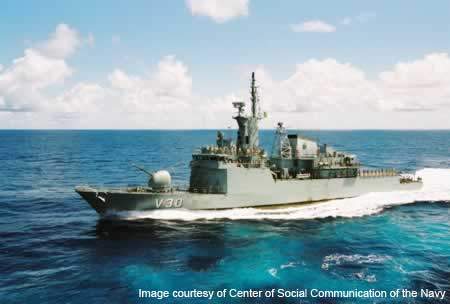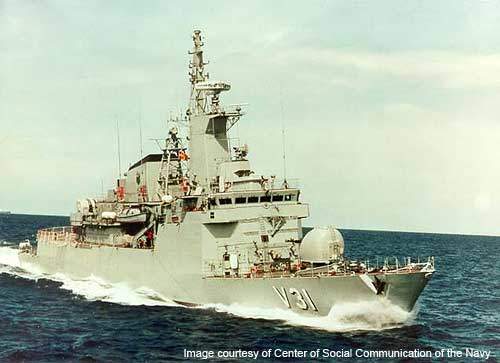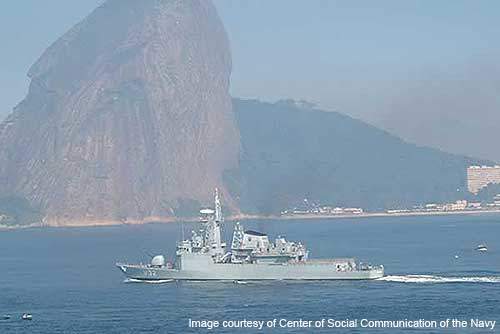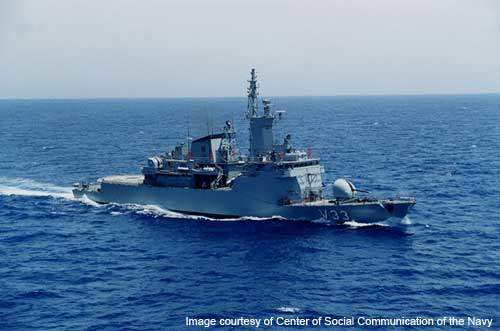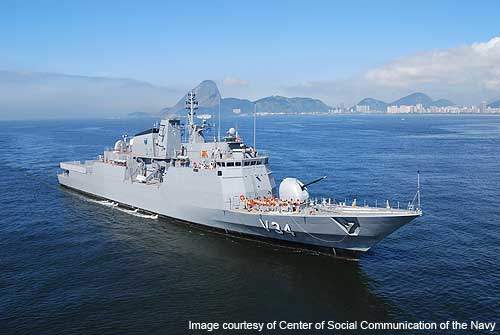The Inhaúma Class multipurpose corvettes are in service with the Brazilian Navy. Four corvettes were commissioned in to the navy between 1989 and 1994. Inhaúma Class is primarily used in anti-submarine warfare (ASW) and anti-surface warfare (ASuW) missions.
Early plans of building 16 ships were shelved and only four vessels were ordered by the Brazilian Government due to lack of funds.
All the four corvettes were to be built by the Verolme yard, but last two vessels were completed by Arsenal de Marinha do Rio de Janeiro (AMRJ) due to the insolvency of Verolme in 1991.
The construction of the vessels was delayed because of the funding issues.
The lead ship in class, Inhaúma (V-30), was launched in December 1986 and commissioned in December 1989.
Jaceguai (V-31) was launched in June 1987 and commissioned in April 1991. Júlio de Noronha (V-32) was launched in December 1989 and commissioned in October 1992.
The last ship in class, Frontin (V-33), was launched in February 1992 and commissioned in to the Brazilian Navy in March 1994.
An improved version of the Inhaúma Class, named Barroso (V34), was laid in December 1994. It was launched in December 2002 and commissioned in August 2008.
Barroso is equipped with a new fire control system and improved electronic warfare and countermeasures equipment. Around 57% of the onboard systems were developed indigenously. Barroso is deployed to protect the domestic shipping and oil fields in the region.
Inhaúma Class design
Inhaúma Class was designed by the Brazilian Naval Design Office with assistance from MTG Marinetechnik in Germany. The design incorporates flush decked hull and conventional layout. It has an overall length of 95.8m, beam of 11.4m and draft of 5.3m. The standard displacement of the warship is 2,000t. Inhaúma can complement a crew of 122 members.
Command and control
Inhaúma Class corvettes are equipped with the Ferranti CAAIS 450 (computer aided action information system). The system uses FM 1600D or FM 1600E computer and functions with Y link. It tracks, identifies and prioritises the threats. It also controls the onboard ECM systems and weapon systems.
The corvette is also fitted with Saab EOS 450 fire control system.
Inhaúma Class missiles
Inhaúma Class is armed with four Exocet MM40 anti-ship missiles. The missile uses inertial and active radar guidance system and travels at a maximum speed of Mach 0.93. It can carry a 165kg warhead for a maximum range of 70km.
Naval guns
The main gun is a Vickers 4.5in Mark 8 cannon. The gun can fire 25 rounds per minute for a range of 22km. Two Bofors 40mm L/70 anti-aircraft guns onboard provide close-in air defence against aircraft and incoming anti-ship missiles.
Torpedoes
Inhaúma is fitted with two 12.75in triple torpedo launchers firing six Mk-46 anti-submarine torpedoes. The Mk-46 has a maximum speed of 74km/h and can attack submarines lying at shallow and deep water.
Sensors
The sensor suite integrates Plessey AWS-4 surface search radar, Kelvin Hughes Type 1007 surface warning and navigational radar system, Selenia Orion RTN 10X X-band tracking radar and Krupp Atlas ASO4 Mod 2 hull-mounted, active, medium frequency sonar.
Aircraft
Inhaúma Class has an aft flight deck and hangar to support the operations of a Westland Super Lynx AH-11A helicopter. The helicopter can be equipped with Sea Skua lightweight short-range air-to-surface missiles (ASM), Mk-46 torpedoes and Mk-9 depth bombs.
Countermeasures
The electronic countermeasures equipment includes a radar interceptor and a jammer. The corvette is fitted with two Plessey Shield chaff launchers firing chaff and infrared flares in distraction, decoy or centroid modes.
Propulsion
Inhaúma Class is powered by CODOG (Combined Diesel or Gas) propulsion system. The propulsion system integrates two MTU cruise diesel engines developing 8,000hp and a GE LM2500 gas turbine developing 29,500hp.
The gas turbine is equipped with engine controls and monitoring systems. The propulsion system provides a top speed of 27kt and a maximum range of 4,000mi at an average speed of 15kt.

